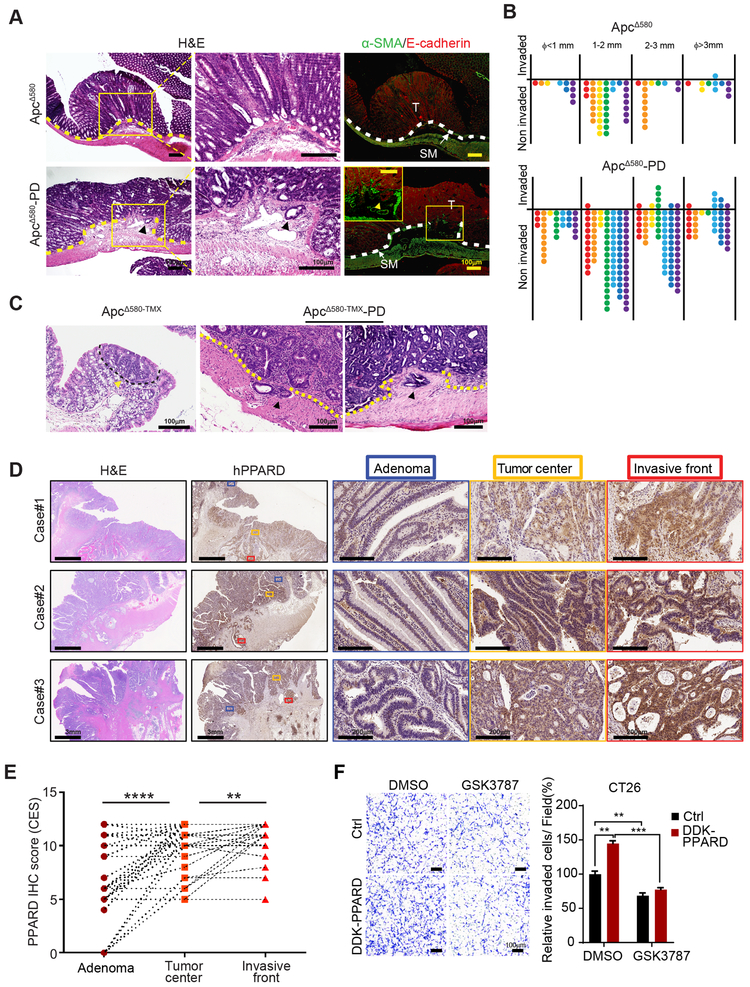Figure 4.
PPARD promotes intestinal tumor invasion. A and B, Intestinal PPARD overexpression promotes invasion of intestinal tumors in ApcΔ580 mice. Intestines of ApcΔ580 and ApcΔ580-PD littermate mice (20 weeks old) were evaluated for tumor invasiveness. A, Representative intestinal section photographs of noninvasive adenoma (upper) and invasive adenocarcinoma (lower) in the indicated mouse groups. Photomicrographs of low (left) and high (middle) magnifications of H&E staining and immunofluorescence staining (right) for E-cadherin (red) and α-SMA (green). T, tumor; SM, submucosa. B, Numbers of invasive and noninvasive tumors per mouse for the indicated groups, scored in whole-mount intestinal (Swiss roll) sections (n = 7 mice/group). C, ApcΔ580 mutation was induced by tamoxifen treatment of littermate mice without (ApcΔ580-TMX) or with intestinal PPARD overexpression (ApcΔ580-TMX-PD) at 6 weeks of age. Mice were followed for 55 weeks prior to being killed to assess intestinal tumor invasiveness. H&E staining photomicrographs showing the only microscopically identified adenoma in the ApcΔ580-TMX group and 2 representative invasive adenocarcinomas in the ApcΔ580-TMX-PD group. D and E, PPARD expression in human colorectal cancer invasive fronts. D, Representative PPARD IHC staining images of human paired colorectal adenomas (Adenoma), CRC tumor centers (Tumor center), and CRC invasive fronts (Invasive front) of 3 patients. E, Total combined CES of nucleus and cytoplasm IHC staining of PPARD for the paired adenomas, CRC tumor centers, and CRC invasive fronts as described in panel D (n = 41 patients). F, Effects of PPARD inhibitor GSK3787 on PPARD promotion of CT26 mouse CRC cell invasion. CT26 cells stably transduced with a control (Ctrl) or mouse DDK-PPARD lentiviral particles were treated with GSK3787 (1.0 μM) or vehicle solvent (DMSO) for 48 hours. Left: representative photomicrographs of invaded cells. Right: invaded cells in at least 4 random individual fields per insert membrane were counted. Data are shown as mean ± SEM. **P < 0.01, ***P < 0.001, and ****P < 0.0001.

